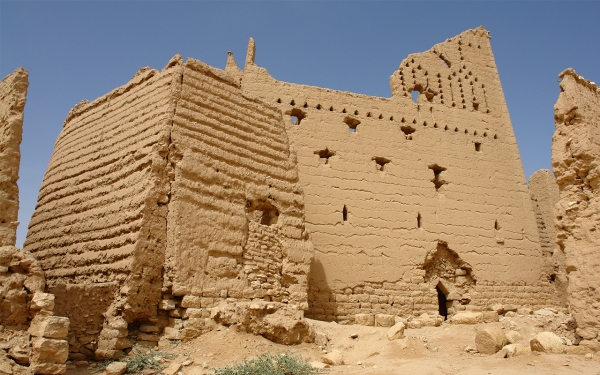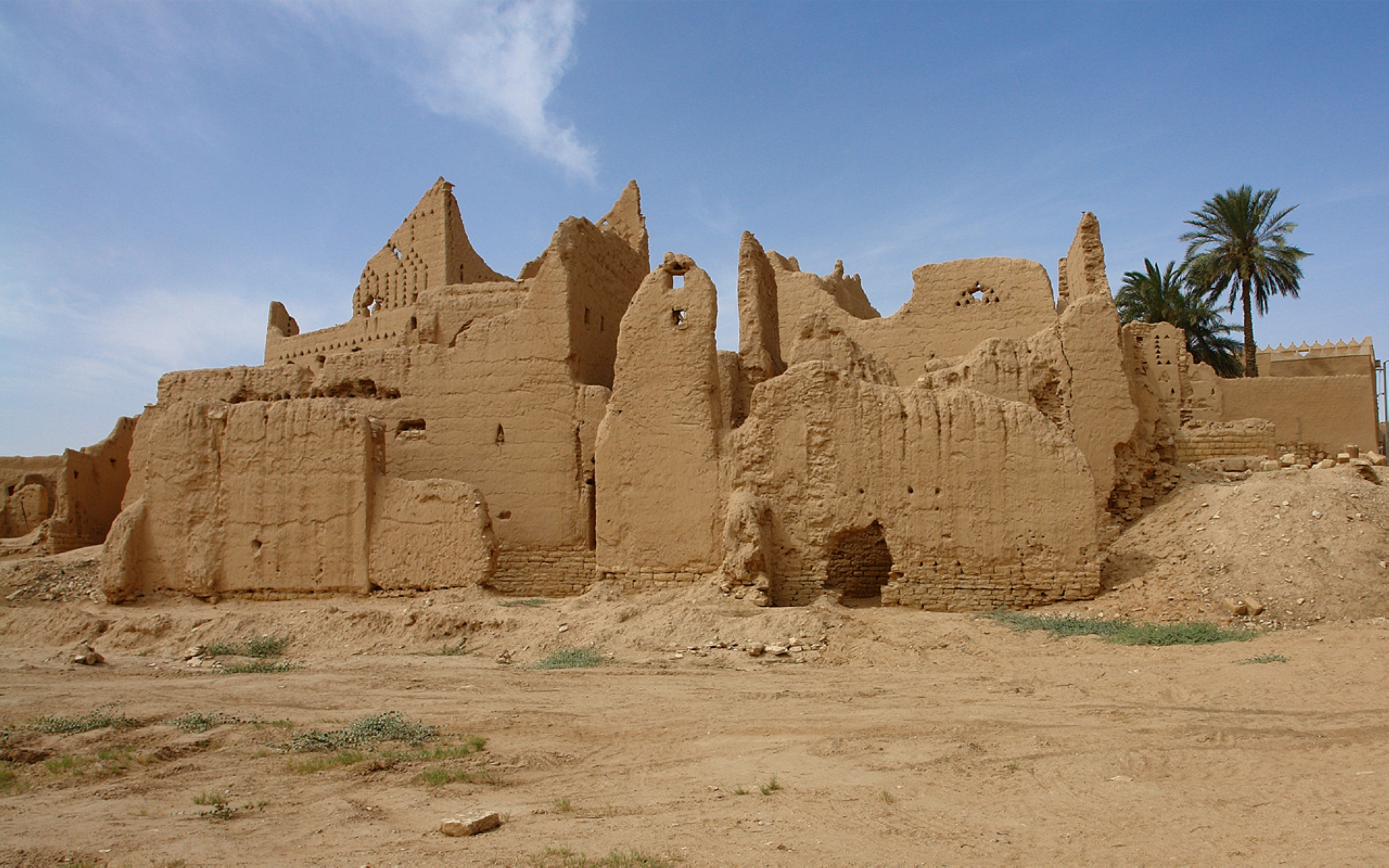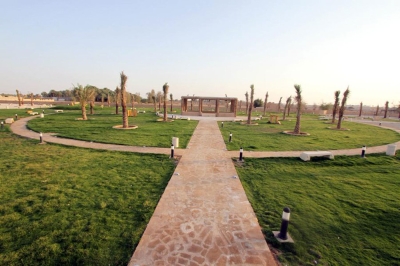
Salwa Palace is the ruling palace during the era of the First Saudi State and one of the largest historical palaces in the Kingdom of Saudi Arabia. It is located in ad-Dir'iyyah Governorate, northwest of Riyadh City. Its establishment is linked to the First Saudi State, historically known as the home of the early founders. It was from this palace that the affairs of the First Saudi State were managed, making it a permanent residence for its Imams (leaders).
The name "Salwa Palace" is derived from its architectural style and multiple benefits, as it entertains and soothes its residents and visitors, alleviating their worries and sorrows, reflecting the meaning of the Arabic word 'Salwa'. It forms a comprehensive architectural system with its residential, administrative, cultural, and religious units.
Location of Salwa Palace
Salwa Palace is situated within the historical al-Turaif Neighborhood, one of the largest mud-brick cities in the world, and has been listed on the UNESCO World Heritage Sites since 2010.
The palace served as the center of governance during the First Saudi State for four decades. Since its construction in 1765 by Imam Abdulaziz Bin Mohammad Bin Saud, the Imams of the state resided there, managing the affairs of the First Saudi State from the palace.
The palace rises in the eastern part of al-Turaif Neighborhood, occupying an area of about ten thousand m. It overlooks Wadi Hanifah and the Neighborhood beyond it, bordered by Wadi Hanifah to the north, the palaces of Prince Fahd Bin Saud and Imam Abdullah Bin Saud to the south, Imam Mohammed Bin Saud Mosque (al-Turaif Mosque) to the west, and Bayt al-Mal to the east.
Construction of Salwa Palace
The palace was built in stages and consists of seven units, including reception and hospitality halls, the residence of the Imam and his family, and state administration offices of that time. A mosque where the Imam used to pray was also annexed to the palace.
In 1818, the palace was abandoned due to the destruction of ad-Dir'iyyah, the capital of the First Saudi State, and the killing and displacement of its people by Ottoman forces, which led to the end of the First Saudi State. Most parts of the palace remained abandoned for nearly a century.

Revival of ad-Dir'iyyah and development of al-Turaif Neighborhood
King Salman Bin Abdulaziz Al Saud gave special attention to ad-Dir'iyyah, contributing to its becoming one of the important destinations for learning about Saudi history. As a result, al-Turaif Neighborhood was registered as a UNESCO World Heritage Site in 2010.
On December 9, 2018, King Salman Bin Abdulaziz inaugurated al-Turaif Historical District Development Project, along with Salwa Palace being one of its key elements, in the presence of leaders, heads of state, and delegations of the Gulf Cooperation Council (GCC) countries. The project aims to develop the historical district, making it an international cultural and tourist center, in line with its historical, cultural, architectural, and environmental characteristics, positioning it among the world’s heritage cities.
Diriyah Gate Development Authority is dedicated to preserving and developing the historical site of ad-Dir'iyyah, which includes al-Turaif Neighborhood, built in 1766. The site receives special attention to enable visitors to recall the history of kings and heroes and closely explore the cultural and heritage wealth of the Kingdom.
Al-Turaif Neighborhood houses the "Great Mosque of al-Turaif", adjacent to Salwa Palace from the east. It is one of the landmarks of the neighborhood, due to its proximity to the palace and its view over the valley. It serves as the great mosque of the state, where the state's imams lead the people in Friday prayers.
Imam Saud Bin Abdulaziz built a bridge connecting them from the upper floor to facilitate movement between the mosque and the palace. The mosque also included a school for teaching religious sciences. This mosque used to be the largest in the Arabian Peninsula at the time, symbolizing the strength and unity of the Saudi State.
Ad-Dir'iyyah Biennale at Salwa Palace
Ad-Dir'iyyah Biennale at Salwa Palace aims to showcase the history of the First Saudi State through a collection of museum exhibitions and engaging activities housed within the palace, which was 'the seat of government at the time'. The biennale offers two experiences for visitors: the first is the closed museum display inside the fifth and sixth units of Salwa Palace, which have been restored and equipped with modern structures to house various exhibits, including paintings, sculptures, museum pieces, and documentary movies. The second experience is an open display among the ruins, where visitors can wander through the restored remnants of the palace units along a designated path with shaded stopping points and screens providing information about the palace's spaces and historical events that took place there.
Related quizzes
Related articles

